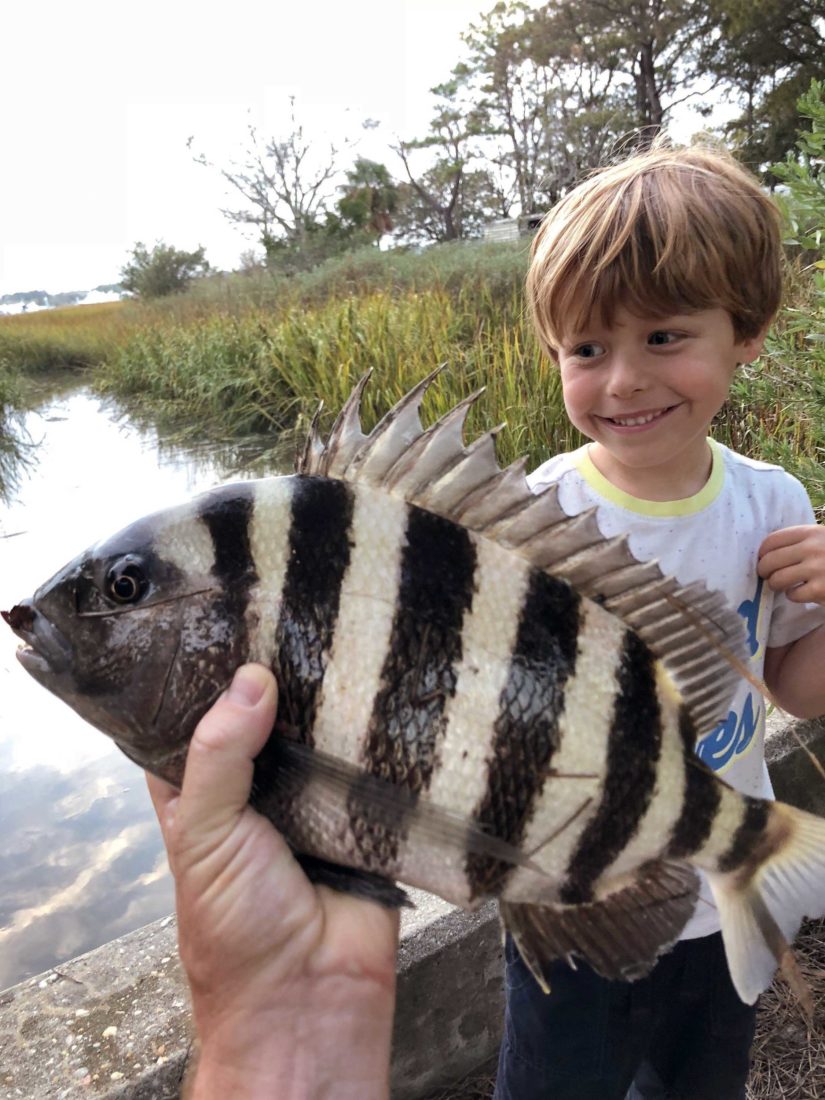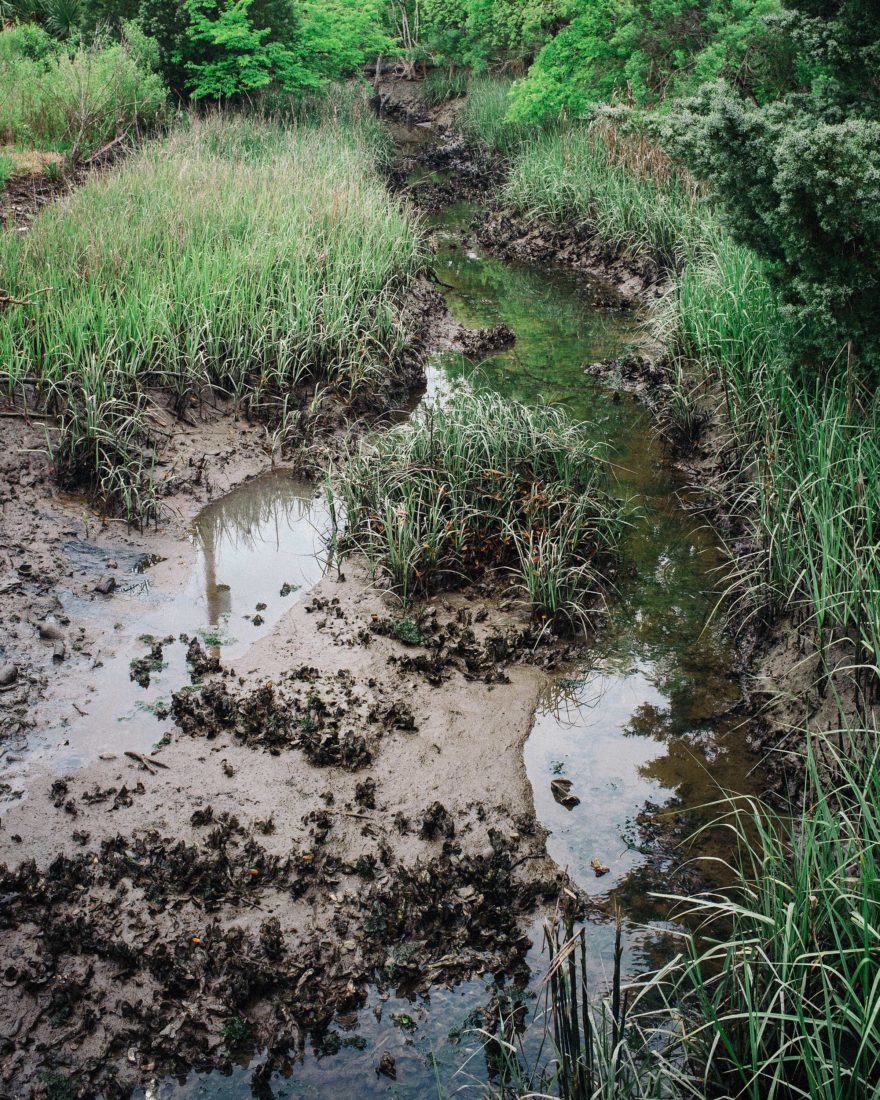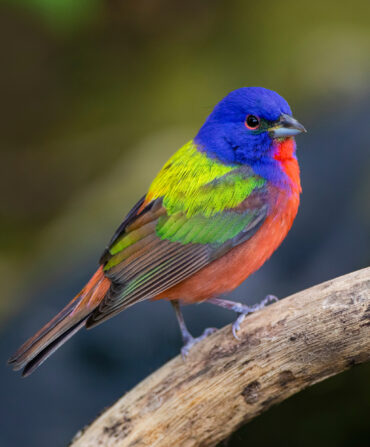In the argot of Lowcountry watermen, a feeder creek is a sliver of salt water that cuts through the spartina grass, its wending course dictated by geological forces that came to bear some twelve thousand years ago. Take a jon boat into one on a rising tide and the grass will brush up against your gunwales as you motor along, until the creek eventually becomes too tight to navigate. Here the water still pushes forward beneath the boat, following that ancient path before spilling out into the flats and the intertidal zone.
Feeder creeks are some of my favorite places to explore and fish. I’m continually amazed at the fecundity of these tiny waterways, whether it be their schools of game fish—redfish and sea trout—or more solitary hunters like flounder. There’s birdlife, too: herons, marsh hens, ibis, and ospreys, patrolling from above. They all come to feed on the untold numbers of shrimp, mud minnows, mullet, and crabs that use tidal wetlands as a nursery. In a jon boat, when you kill the engine, you hear a cacophony of life beneath the surface—clicks, snaps, and pops—amplified by the aluminum hull.
Recently, I heard about a tug-of-war between a developer and conservationists over a plan to fill in the bulk of a feeder creek near the Garden & Gun offices in downtown Charleston, South Carolina. Flowing off the Ashley River, Gadsden Creek sits on the western side of the Charleston peninsula and was once a popular spot for swimming, fishing, and even baptisms through the eighteenth and nineteenth centuries. But as with many creeks on the peninsula, its course was altered and portions were filled in as the city grew. In the 1950s, the city used much of the creek and adjoining wetlands as a landfill. But that ever-present push and pull of the tide was not stamped out entirely, and over the years pluff mud and spartina grass reappeared as Gadsden Creek reclaimed part of what had been lost.
Last November, I took my son, Sam, to get a closer look at Gadsden. Of course, we brought our fishing rods and some live shrimp. It didn’t take long to spot a snowy egret on the bank, blue crabs working the edge of the spartina, and mud minnows darting about. And while standing above a concrete culvert pipe looking out toward the Ashley, we caught a trout and a nice sheepshead, though Sam was most delighted by the crabs that kept latching onto his bait.

DiBenedetto’s son, Sam, admires a sheepshead caught from the creek.
Is Gadsden Creek a pristine waterway? Far from it. After it makes its way from the Ashley, it’s channeled beneath a four-lane road, and most folks who saw us with fishing rods seemed surprised. But should it be filled in once again, with an underground pipe dictating its course? Or should it be revitalized? Walking along its banks with Sam reminded me that while there are important big battles being waged—the fight to save the Everglades, whether to allow offshore drilling off the Carolinas—there is magic in the little places, too. As the Kentucky writer and conservationist Wendell Berry said: “The health of the oceans depends on the health of rivers; the health of rivers depends on the health of small streams; the health of small streams depends on the health of their watersheds.…the health of small places is exactly the same as the health of large places….Small destructions add up, and finally they are understood as parts of large destructions.”
As of now, the fate of Gadsden Creek remains undecided. But here’s hoping there’s a small victory in store for the small places.
David Dibenedetto
Senior Vice President & Editor in Chief
@davedibenedetto








